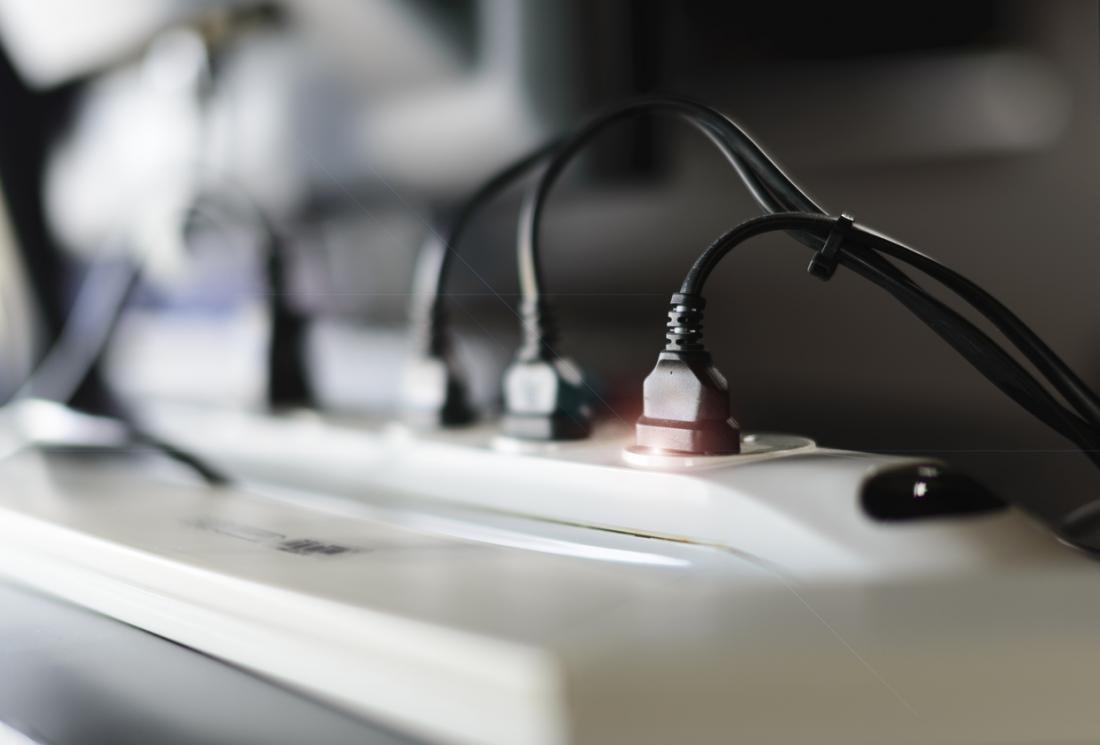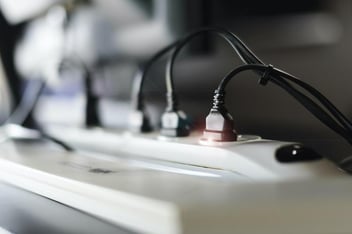Some electrical hazards are obvious — like downed power lines or exposed wires. But smaller electric risks can exist in and outside homes, posing unknown hazards to you and your family.
To help prevent injury and damage, you can use this simple checklist to ensure your home is hazard-free.
Plugs and extension cords
- Extension cords are not being used as a permanent wiring method (they are safe for temporary use only).
- All extension cords are in good repair with no damage to cords, and the ground pin is in place. Only extension cords with polarized or three-prong plugs are being used.
- No cords are being run through doorways or windows, where they may become pinched.
- No extension cords are placed under rugs (when a cord is covered, heat is not able to escape, which may result in a fire hazard).
- Extension cords are not being overloaded or left in water or snow.
- Multi-outlet adaptor connections (like power bars) are not plugged into one another to increase length, or to provide more outlets than the circuit can supply.
- All cords being used can handle the amperage indicated on your electrical devices.
- Multi-outlet adaptor connections are not overloaded by devices not being utilized
- All electrical enclosures, switches, and outlets have covers or faceplates.

Lights
- Light fixtures are firmly installed on walls and ceiling. Replacing a light fixture? Read our blog article to find out if a permit is needed.
- Indoor and outdoor lighting is appropriate for its location. Green labels mean the product is suitable for outdoor use, while red labels mean the lights are for indoor use only.
- Light bulbs are the correct type and wattage for your fixture. Consider switching to energy-efficient LED lights — they produce less heat, which reduces the risk of fire.
- All table and floor lamps are sitting on level surfaces and away from flammable material such as bedding, pillows, or curtains.
Household appliances
- No appliances have frayed or damaged cords (if they do, the appliance should be replaced).
- Kitchen and bathroom appliances are unplugged when not in use.
- Portable space heaters are not connected with an extension cord, placed near flammable materials, or placed in a bathroom.
- There are no flammable materials such as paper towels, napkins, and kitchen rags kept near heat-producing kitchen appliances such as stoves or toasters.
- All kitchen appliances have appropriate approval markings (view our information bulletin for the acceptable approval markings).
Extra tips for parents
- All outlets within children's reach have outlet plug covers to prevent electric shock. Consider having tamper-resistant electrical outlets installed. These spring-loaded receptacle cover plates prevent the insertion of objects when unequal pressure is applied to the receptacle’s contact points.
- All extension cords are out of reach of children. Electrical shock or burns could occur if chewed on or handled improperly.
Make sure you’re able to check off everything in this checklist — sometimes a simple change or a quick and inexpensive fix can prevent an injury or damage to your home.
One last piece of electrical safety advice is to ask a licensed electrical contractor or electrician about Arc-Fault Interrupters (AFCIs). This technology can prevent arc-faults, which are caused by over-burdened electrical systems and can pose a fire risk to your home.
Note: This electrical safety check is not intended to replace a complete electrical assessment of your electrical system, which should only be performed by a licensed electrical contractor.




